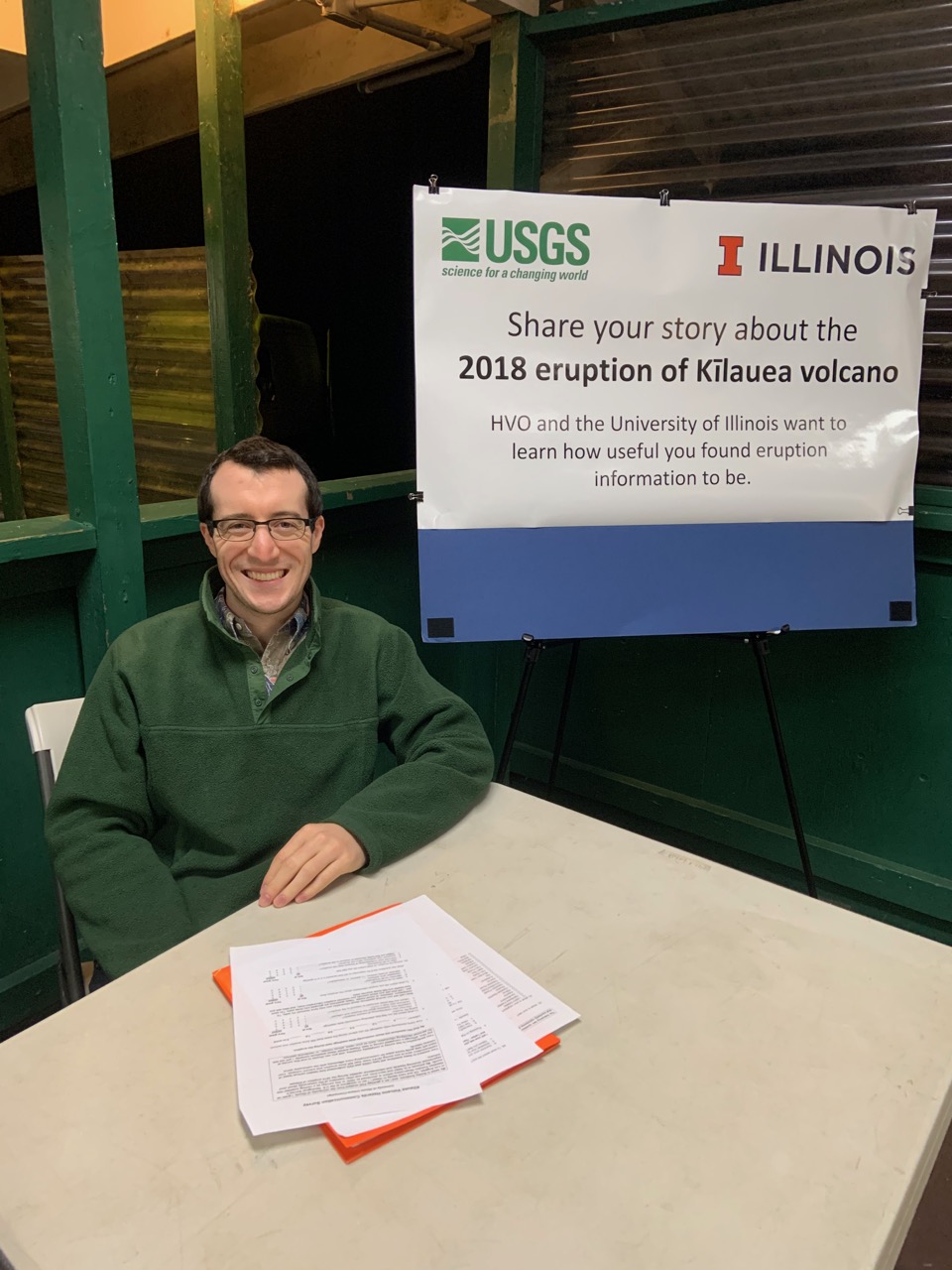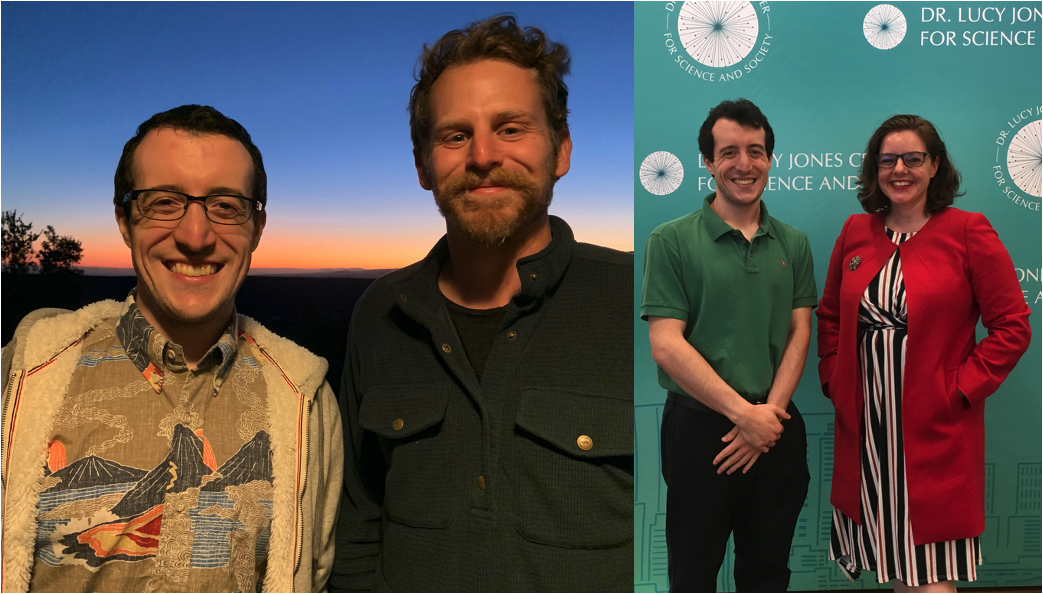2 March 2021
Social Science, Social Media, and Serendipity
Posted by Shane Hanlon

Up bright and early, awaiting my first interviews at the Volcano Village Farmers’ Market. Credit: David Damby (January 2020).
By Robby Goldman
You don’t enter a volcano geophysics PhD expecting to interview people at Farmers’ Markets on the Island of Hawai‘i. Yet, that is precisely where I found myself one year ago, agonizing over how to strike up a conversation with one of the lilikoi jam or malasada sellers. As a physical scientist, I wasn’t properly trained to interview people at random, and many of my early attempts to hold meaningful conversations fell flat. Nevertheless, after four weeks of trial-and-error, I had completed 22 interviews and improved my understanding of how Island residents received reliable information during Kīlauea Volcano’s disruptive 2018 eruption. The interviews were the start of a much larger project to retrospectively evaluate the ability of the @USGSVolcanoes social media group to educate the public on volcano hazards and address sources of misinformation surrounding Kīlauea’s 2018 eruption.
What could possibly have motivated me to boldly attempt a social science research project in the middle of a geophysics PhD? Serendipity. One morning in November 2018, during the Geological Society of America’s Annual Meeting, I made the last-minute decision to attend a “Late Breaking” session on Kīlauea’s recently concluded eruption. I might have predicted that the most memorable talk of the week would occur there, but would never have guessed that I would be most excited by a talk focused less on the eruption itself than the social media posts surrounding it. This talk, given by USGS volcanologist Dr. Wendy Stovall, illustrated how several dedicated and resourceful USGS scientists provided thousands of residents throughout the Island of Hawai‘i with accurate, around-the-clock eruption information during the 2018 crisis.

Posing on Zoom with Dr. Wendy Stovall. Credit: Wendy Stovall (November 2020).
In the weeks following that talk, I grew inspired to learn more about the USGS’s social media response. This curiosity culminated in my decision to reach out to Wendy in February 2019 and propose a research collaboration. Together with Dr. David Damby, a USGS public health volcanologist, we drafted an NSF Graduate Research Internship Program proposal that was successfully funded that summer. Coincidentally, this was around the time I met our final project collaborator, Dr. Sara McBride, an exuberant and well-traveled USGS social scientist. However, this was only an informal introduction–although I asked Sara for advice on how to analyze emotional cues from public social media posts, I did not expect that she would become one of my closest collaborators on the project one year later! Perhaps all meaningful scientific collaborations result from serendipity.
-Robby Goldman is an NSF Graduate Research Fellow at the University of Illinois Urbana-Champaign and the U.S. Geological Survey’s Cascades Volcano Observatory. He is also a Voices for Science Advocate. Find him on Twitter and Instagram.

Sunset on Kīlauea Volcano’s summit with Dr. David Damby. (Right) Meeting Dr. Sara McBride at the Dr. Lucy Jones Center for Science and Society. Credit: Robby Goldman (January 2020 and June 2019, respectively).


 The Plainspoken Scientist is the science communication blog of AGU’s Sharing Science program. With this blog, we wish to showcase creative and effective science communication via multiple mediums and modes.
The Plainspoken Scientist is the science communication blog of AGU’s Sharing Science program. With this blog, we wish to showcase creative and effective science communication via multiple mediums and modes.